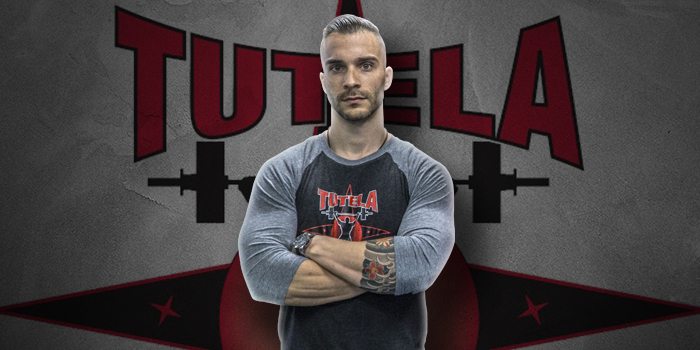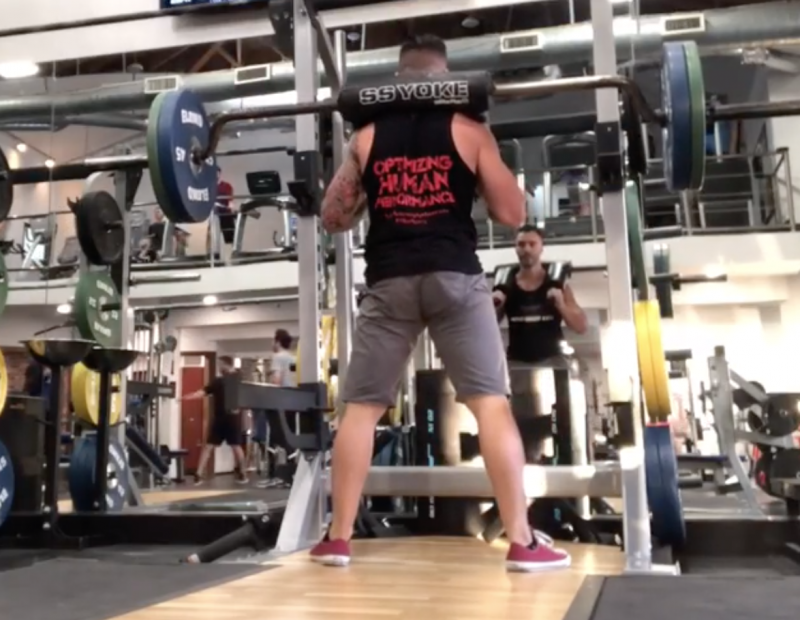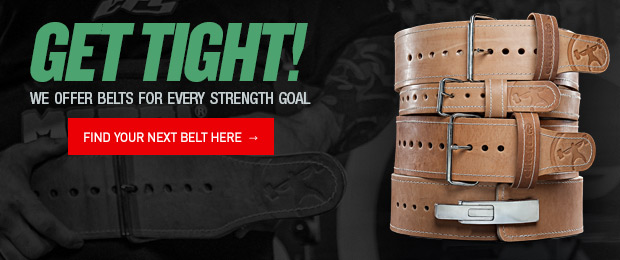
Let’s assume that you’ve been training for quite a while.
Let’s assume that you understand the fundamental human movement patterns relatively well and already have a pretty decent foundation of strength and muscle.
You’ve made sufficient progress over the last couple of years, and you’re beginning to push some decent numbers.
At this stage of the game, there are a few things that I want you to work on that are going to keep you healthy, break through plateaus, and even take your physique to the next level.
Most intermediates that have come to me without ever working with a qualified coach before are lacking a few qualities in their technique, especially on big lifts. Lacking these qualities can potentially lead to injury at one point or another.
The two qualities that I’m talking about are tension and torque.
First, let’s discuss what tension is and why it’s important.
Think of tension as bracing your body from head to toe. It’s what keeps your spine in its natural alignment (combined with optimal strength, stability, and mobility, of course) and prevents any shifting or movement aside from the movement you’re attempting. Before you learn how to brace properly, you’ll have to lay a foundation of core strength and stability.
Most don’t understand the significance of creating tension, and when attempting a lift, they simply get under the bar and go. Using a squat as an example, lifters who haven’t had much or any coaching will grab onto the bar, get under it, stand up, walk back, and squat. Even if they understand the movement to some degree, they lack tension throughout the body, which ultimately puts them in a bad position, sets them up for injury, and holds them back from making any real progress.

Here’s what to do instead.
Grab onto the bar and get beneath it like you’re about to perform a pull-up (keep your feet on the floor) and pull your back up to the bar by firing the lats down like you’re doing a pull-up. This will help activate and engage your lats during your set-up. Be conscious of keeping your lats engaged throughout the entire set. When you’re setting your feet, squeeze the bar as tight as humanly possible, and do not lose that death grip on the bar.
Once your feet are set, take a deep belly breath in, and flex your abs tight as if you were going to take a punch to the stomach. If you’re wearing a belt, think of trying to fill up the diameter of the belt with air. With both feet under you, unrack the bar, take one step back, and set your feet — don’t lose the tension you’ve created! Once your feet are set and you’re ready to attempt the lift, let the air out (do not lose tension and bracing), and follow it up with another big deep belly breath in while keeping the abs flexed tightly, lats engaged, and a death grip on the bar.
WATCH: Why Do I Always Wear a Belt?
Perform the lift while staying tight and maintaining the tension you’ve created throughout the duration of the movement.
That’s a lot different than just grabbin’ and goin’.
That’s just one example, but I want you to think of creating that type of tension with all of your lifts.
If you’re lacking the ability to stabilize, you’re going to have to improve your core strength. The “core” is a word that is thrown around very loosely these days, but that’s a whole other article in itself.
For now, think of your core as one unit, from your shoulders to your knees. The main objective of the core is to stabilize the spine while your extremities are in motion.
If the core is weak and unstable, then you’re going to have a difficult time maintaining an optimal position throughout your big lifts, regardless of the tension you create.
Address this in your program with isolative core exercises like planks and side planks, to name a couple.
Now, let’s talk about torque.
Many people I’ve worked with lack stability in their shoulders and hips while performing compound movements like the squat, bench, and even the push-up.
In Kelly Starrett’s famous book, Becoming a Supple Leopard, he talks about how generating torque will help create stability in the joints. Without sufficient stability in the joints, you won’t maintain proper position, and lacking proper position will lead to unnecessary stress on the joints, which can eventually result in a catastrophic injury in time.
Let’s look at the bench press as an example. Instead of simply grabbing the bar and lowering it to your chest, generate torque by “breaking the bar” and applying force as if you wanted to snap the bar in half. That torque is going to put your shoulders in a much safer position and — along with adequate tension from head to toe — will lead to a stronger lift.
If we shift our focus to the squat for a second, think about applying an outward force on the feet during the eccentric phase as well as the transition in the bottom. The knees will oftentimes collapse in (valgus), which puts the knees under a ton of stress. Outward force on the feet and pushing the knees out will generate more torque and stability in the hips and simultaneously help keep the knees in a safer position.
Think of tension and torque as a way of shielding your spine and soft tissue from unnecessary stress or damage while putting you in a much stronger position, even if it doesn’t feel that way at first.
Getting stronger should always be the goal; however, strength should not come at the expense of your health. In previous articles, I’ve talked about the importance of warming up properly and even catching a bit of a pump before hitting your big movement of the day to put you in a better state to train in.
RELATED: Minimizing Pain for the Active Meathead
It’s probably safe to assume that if you’re just someone who wants to stay strong, lean, athletic, and healthy, you’re not someone who wants to get injured during training.
I encourage you to start focusing on creating tension in all of your lifts while generating torque to protect your joints.
Over time, you will see a considerable difference in the way you feel during your lifts. As I mentioned before, it may feel odd at first because there’s a lot to think about, especially if you’re lacking core strength and stability. But once you understand it and develop the necessary strength and stability, you’ll notice that you’ll be capable of maintaining a better position while improving your numbers.
Train to get bigger. Train to get stronger. But train intelligently so you can continue to train for the long haul.
If you have any questions on any of this, feel free to drop a comment below or shoot me a DM on Instagram (@chris_tutela). I’m always happy to help.
Thanks for reading.










